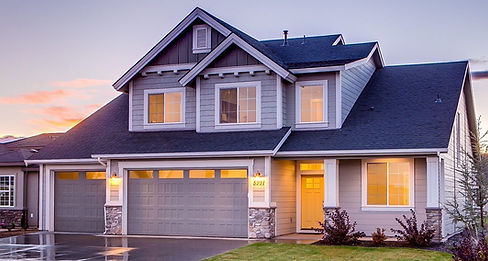Internet Speed Guide:
What Speed Do You Need?
Find the Perfect Internet Speed for Streaming, Gaming, Work & More

Understanding Internet Speeds: Mbps, Download vs Upload
What Does Mbps Mean?
Mbps stands for "megabits per second" and measures how much data your internet connection can transfer. The higher the number, the faster your internet speed.
Download Speed vs Upload Speed
-
Download Speed: How fast you can receive data (streaming, browsing, downloading files)
-
Upload Speed: How fast you can send data (video calls, uploading photos, live streaming)
Internet Speed Requirements by Activity

Video Streaming Speeds
-
Standard Definition (480p): 3 Mbps
-
High Definition (720p): 5 Mbps
-
Full HD (1080p): 8 Mbps
-
4K Ultra HD: 25 Mbps
-
Multiple 4K streams: 100+ Mbps
Recommended: 50-100 Mbps for households with multiple streamers

Online Gaming Speeds
-
Console gaming: 3-6 Mbps
-
PC gaming: 6-25 Mbps
-
Competitive gaming: 25+ Mbps
-
Game downloads: 100+ Mbps
-
Streaming while gaming: 50+ Mbps
Key factor: Low latency is more important than speed for gaming

Work from Home Speeds
-
Video calls (HD): 1.5 Mbps up/down
-
Video calls (4K): 15 Mbps up/down
-
File uploads: 10+ Mbps upload
-
Cloud applications: 25+ Mbps
-
Multiple workers: 100+ Mbps
Upload speed matters: Look for plans with good upload speeds

Smart Home & IoT Devices
-
Smart speakers: 1 Mbps each
-
Security cameras: 2-10 Mbps each
-
Smart thermostats: 1 Mbps
-
Smart TVs: 25 Mbps for 4K
-
10+ devices: 100+ Mbps
Device count matters: More devices equals more bandwidth
Internet Speed Recommendations by Household Size
6 Key Factors That Affect Your Internet Speed
Understanding these factors helps you choose the right speed and troubleshoot performance issues
1: Number of Users & Simultaneous Activities
Every person using the internet simultaneously shares your total bandwidth. More users mean each person gets less speed for their activities.
Speed Impact:
-
1-2 users: Full speed available for each activity
-
3-4 users: Speed divided among activities
-
5+ users: Significant speed reduction during peak usage
Example: With 100 Mbps and 4 people streaming HD video (25 Mbps each), you're using 100% of your bandwidth.

2: Connected Devices & Background Usage
Every connected device uses some bandwidth, even when not actively being used. Smart homes with many IoT devices need more speed.
Typical Device Usage:
-
Smartphones/Tablets: 1-5 Mbps each (when active)
-
Smart TVs: 25 Mbps for 4K streaming
-
Security cameras: 2-10 Mbps each (continuous)
-
Smart speakers/IoT: 1-2 Mbps each
-
Gaming consoles: 3-25 Mbps (when gaming)
Quick Math: 20 connected devices can easily use 50+ Mbps in background activities alone.

3: Type of Online Activities
Different activities require vastly different amounts of bandwidth. High-bandwidth activities can quickly consume your available speed.
Bandwidth Requirements by Activity:
-
Email & Browsing 1-5 Mbps
-
HD Video Calls 5-15 Mbps
-
4K Streaming 25 Mbps
-
Online Gaming 3-25 Mbps
-
Large File Downloads Uses all available

4: Time of Day & Network Congestion
Internet speeds can vary significantly based on when you're online. Peak usage times can slow down your connection due to network congestion.
Peak Usage Times:
-
Evenings (7-11 PM): Heaviest usage, slowest speeds
-
Weekends: Higher usage throughout the day
-
Work hours (9-5 PM): Moderate usage
-
Late night/Early morning: Fastest speeds
Pro Tip: If you experience slow speeds during peak hours, you may need a higher-speed plan to maintain performance.

5: Internet Connection Type
The type of internet connection significantly impacts your maximum speeds and reliability. Not all connection types are available in every area.
🚀 Fiber Optic
Up to 1,000+ Mbps
-
Fastest speeds available
-
Symmetrical upload/download
-
Most reliable connection
-
Best for heavy usage
📡 Cable
Up to 500-1,000 Mbps
-
Widely available
-
Good for most households
-
Shared neighborhood bandwidth
-
Lower upload speeds
📞 DSL
Up to 100 Mbps
-
Available in rural areas
-
Speed depends on distance
-
Good for basic usage
-
Limited high-speed options
🛰️ Satellite
Up to 100 Mbps
-
Available everywhere
-
Higher latency
-
Data caps common
-
Weather-dependent
6: Equipment & Home Setup
Your modem, router, and home setup can significantly impact your actual internet speeds, even with a high-speed plan.
Equipment That Affects Speed:
-
Old routers: May not support high speeds
-
WiFi vs Ethernet: Wired connections are faster
-
Router placement: Distance and obstacles matter
-
Network congestion: Too many devices on WiFi
-
Outdated cables: Old coax or ethernet cables

Optimization Tips:
-
Use ethernet for high-bandwidth activities
-
Place router in central, elevated location
-
Upgrade to WiFi 6 for better performance
-
Consider mesh systems for large homes
Cable Internet FAQs
How does cable internet compare to fiber and DSL?
Cable internet offers faster speeds than DSL and wider availability than fiber. Using coaxial cable infrastructure, cable internet delivers reliable speeds up to 1+ Gig in most urban and suburban areas. While fiber may offer higher maximum speeds, cable provides excellent performance with proven reliability and extensive coverage.
What cable internet speeds do I need for my household?
Cable internet speed needs depend on your household size and usage. For basic browsing and streaming, 100-200 Mbps works well. For multiple 4K streams, gaming, and work-from-home, consider 300-500 Mbps. Large households with heavy usage benefit from gigabit cable speeds up to 1000 Mbps.
Why is professional cable internet installation recommended?
Professional cable installation ensures optimal signal strength, proper coaxial connections, and correct modem placement for maximum performance. Our certified technicians test signal levels, optimize cable routing, and configure your network for the best possible speeds and reliability. Professional installation also includes warranty coverage and ongoing support.
Find the Best Internet Speed for Your Needs
Now that you know what speed you need, let our experts help you find the perfect plan from top providers in your area.
